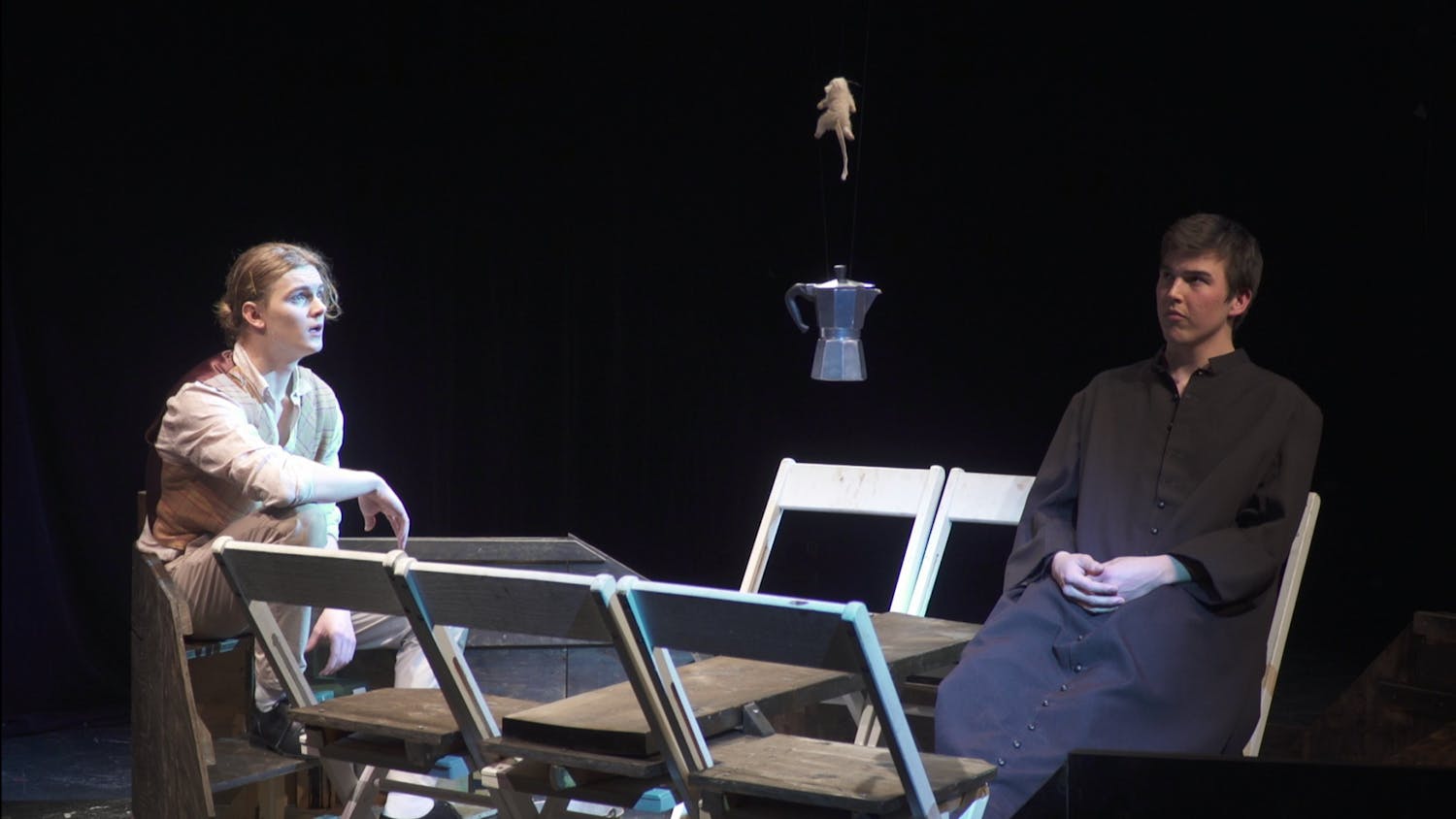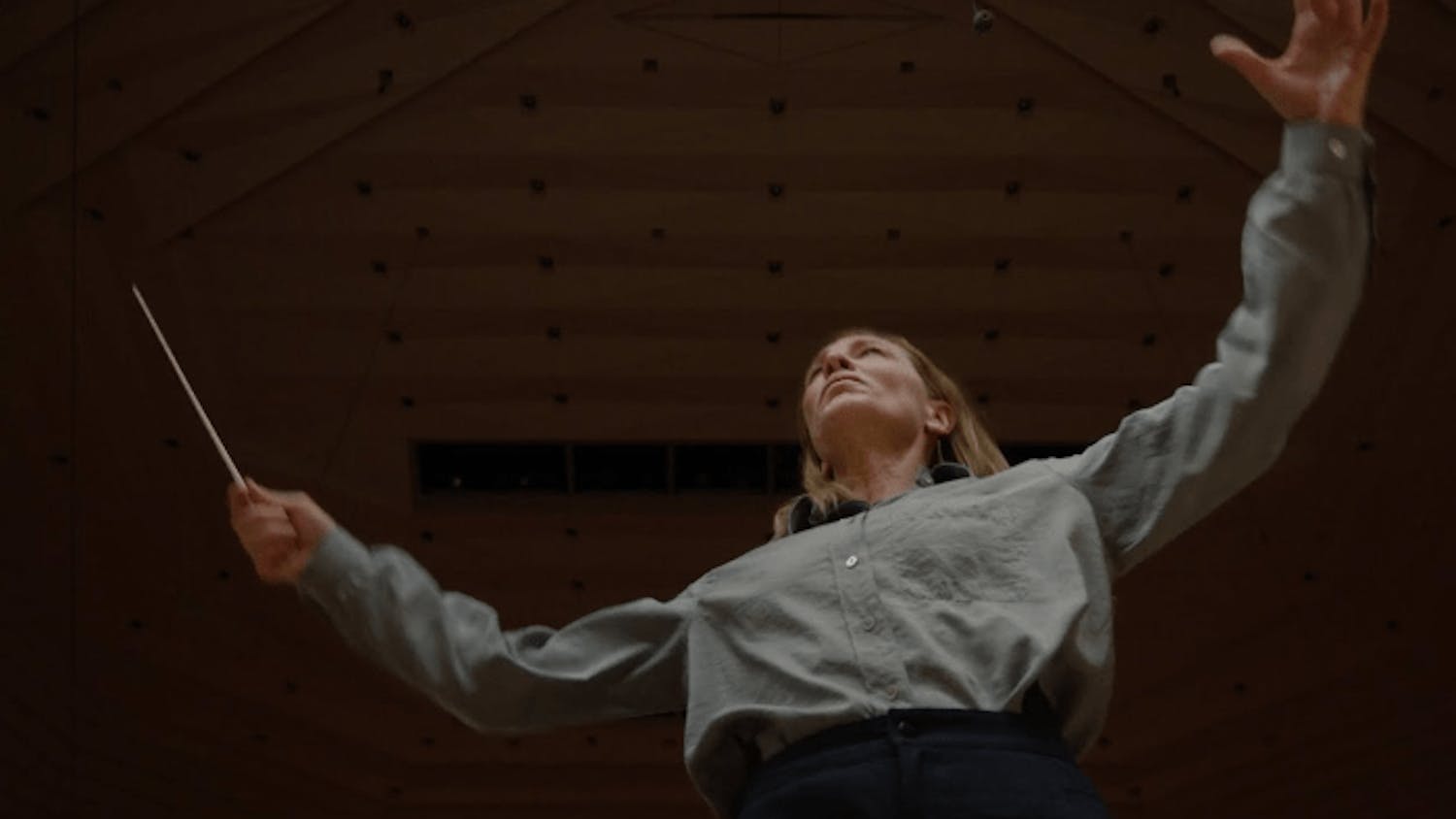Would you dance through the night in the apocalypse? What would it be like to eat your last tomato? Why would you bring kids into a world without adequate food and water? Could the end of days bring out the worst in you? These are just some of the questions posed by Marisela Treviño Orta’s “Somewhere,” directed by Assistant Professor of Theatre Olga Sanchez Saltveit, which premiered April 6 in the MAC. The play was part of a larger series of events spanning two separate weeks entitled “Art vs. the Apocalypse,” in which the Franklin Environmental Center invited a variety of artists, professors and students to share with the community what role the arts have in raising awareness about climate change.
The first event in this series, a talk by Professor of Theatre, Environment and Indigenous Studies at the University of Oregon Theresa May entitled “Climate Theatre: Stories of Kinship, Community and Climate Justice,” served as a framing conversation that was offered several hours before the debut of “Somewhere.” May pointed to the history of socially-conscious theater to argue that the arts have always accompanied social transformation. She explained that eco-drama specifically is a place for connections and intimacy because stories invite audiences to immerse themselves in distinct imaginations of what various futures could look like, depending on the climate action that we take today.
Reflecting the sentiments of May’s lecture,“Somewhere” is set in a future that is not necessarily ours, but one wherein “things went very wrong, very fast.” The audience instantly grasps this reality, as the play starts in a laboratory where it is revealed that the last monarch butterflies in the world are being tracked and studied. Yet, a unique theme that was present throughout the play began to emerge: seemingly serious and tragic lines were followed often by absurd and outlandish comments. For example, a central character Diana (Xiaole Niu ’25) explains how she hates truffles because “it’s a texture thing,” while her older sister, Sybil (Meili Huang ’23), retorts, “I hate starving. It’s a hunger thing.”
Scenes like these with such a rollercoaster of emotions reflect that humor is an all-too-human mechanism to make sense of a chaotic world, and the audience reflected this by responding with laughter. At the Friday night post-show discussion, Sanchez Saltveit, who reflected alongside May and Orta, explained how shocking the audience’s reaction was. “To take a line that in rehearsal was so serious, yet everyone in the audience was laughing kind of makes sense,” she said. The main focus of the post-play discussion was on the role of symbolism and myth, which were indeed large focuses for playwright Orta, as her interests, starting from childhood, are rooted in mythology. For example, a scene in the play depicted an intense argument between siblings about the way that the same event in mythology can often have multiple meanings. Alexander (Ethan Fleming ’24) tries to explain how he thinks humanity is cursed because increasingly there are sightings of humans decomposing with plant life growing out of them. He relays that in the story of Narcissus and Daphne, both are turned into plants, a flower and tree respectively, because they are cursed by the gods. His sister Cassandra (Kayla Schwartz ’23.5) counters that for Daphne, being turned into a laurel tree was not a curse, but a way to save her from Apollo’s unwanted advances.
This conversation does not become important until near the end of the play, when another piece of literature is introduced: Diana’s favorite book “The Enchanted April,” by Elizabeth von Arnim. Its plot follows a similar theme, wherein a tree grows magically, but this time as a sign of joy. All of the mythological themes around death being reborn into nature come together at the end of the play when Corin (Ryan Ulen ’26) must reconcile with what death really means in the context of a world where beautiful flowers grow out of dying bodies. In her discussion of the play’s themes, May emphasized how symbols of rebirth are not mere metaphors, but are in fact real in the natural world.
Orta elaborated on May’s point at the reception after the play. Her intention for weaving old myths about rebirth into new concepts was in line with humanity's complex understanding of life and death. “We are part of a life cycle where we can think about death as life. There is life coming out of a dying person, and we don’t have to privilege or emphasize one over the other,” Orta said.
To find out more about the upcoming events part of the series Art vs. the Apocalypse, which will be continuing the weekend of April 20, 21 and 22, visit go/artvapoc/.




